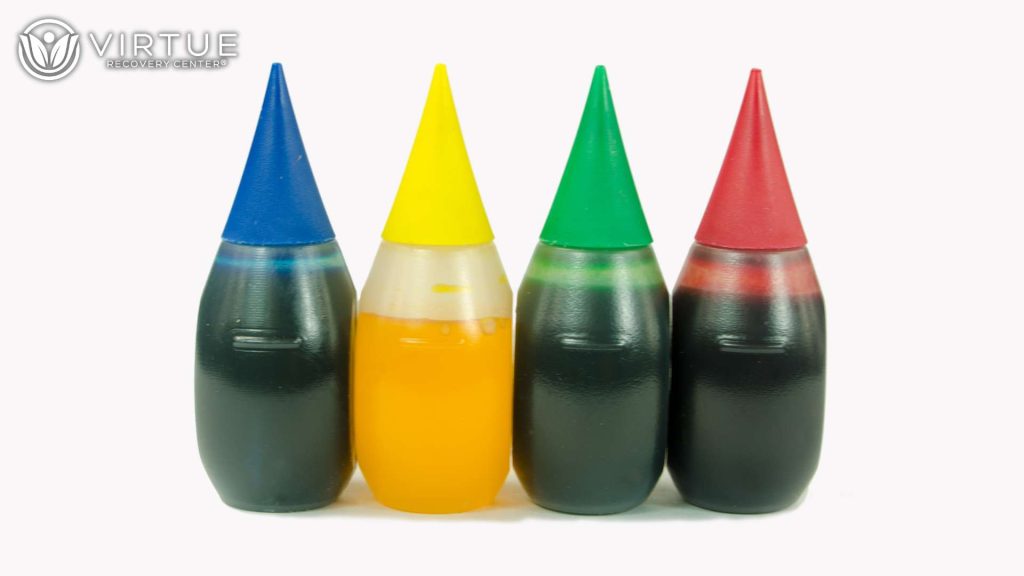Key Takeaways
- Many processed foods contain artificial dyes made from petroleum.
- Dyes like Red 40, Yellow 5, and Blue 1 are linked to mood swings, behavior changes, and increased cravings.
- These food additives may worsen symptoms of eating disorders, especially in teens and young adults.
- Some dyes banned in other countries are still allowed in U.S. foods.
- Understanding food ingredients can help support mental health and recovery from disordered eating.
Introduction
What we eat doesn’t just affect our bodies—it also affects our thoughts, feelings, and behaviors. For people struggling with eating disorders or mental health issues, the foods we choose may play a bigger role than we realize. One hidden danger in modern diets is petroleum-based artificial food dyes. These are colorful chemicals used to make snacks, drinks, and even medicines look more appealing. But research now shows that these dyes may have negative effects on mood, appetite, and mental well-being. In this article, we’ll explore what these dyes are, where they’re found, and how they may impact people—especially those dealing with eating disorders and emotional health challenges.What Are Petroleum-Based Food Dyes?
Artificial food dyes are synthetic color additives made from petroleum, the same oil used to make gasoline and plastic. They are added to foods to make them look brighter or more fun, especially for children and teens. Some of the most common synthetic dyes include:- Red 40
- Yellow 5
- Blue 1
- Red 3 (banned in cosmetics but still found in some foods)
Where Are These Dyes Found?
These dyes show up in many everyday items. You can find them in:- Candy and gum
- Breakfast cereals
- Ice cream and baked goods
- Sodas, fruit punches, and sports drinks
- Snack foods like chips and crackers
- Fast food items
- Some children’s vitamins and over-the-counter medications
Health Concerns: The Link Between Artificial Dyes and Behavior
Many parents have long reported that artificial dyes make their kids hyper or moody. Now, science is catching up. According to Science in the Public Interest and other research groups, dyes like Red 40 and Yellow 5 may be linked to:- Hyperactivity
- Attention problems
- Mood swings
- Irritability
- Anxiety
- Difficulty focusing
How Artificial Dyes May Impact Eating Disorders
People with eating disorders often have a sensitive relationship with food. Their bodies and brains may react more strongly to certain food ingredients, especially those that mess with hunger and mood regulation. Here’s how petroleum-based dyes may contribute to disordered eating behaviors:- They may increase cravings for high-sugar, high-fat foods.
- They can create sugar crashes and emotional lows, leading to binge eating.
- They may disrupt signals of hunger and fullness.
- They can affect how people feel emotionally, increasing shame, anxiety, or depression after eating.
The Role of Red 40, Yellow 5, and Other Common Dyes
Let’s take a closer look at a few of the most widely used synthetic dyes:Red 40
- Found in soda, candy, and snacks
- Linked to hyperactivity and mood changes
- May cause behavioral problems in sensitive individuals
- Some animal studies suggest a possible link to cancer at high doses
Yellow 5
- Used in drinks, cereals, and baked goods
- May cause allergic reactions, asthma symptoms, or irritability
- Linked to changes in energy and emotional regulation
Red 3
- Banned in cosmetics due to cancer risk
- Still used in foods like cherries, candies, and cake toppings
Environmental Health and Regulatory Concerns
The FDA still allows these dyes in food, but other countries take a stronger stance. For example:- Red 40, Yellow 5, and Yellow 6 must carry warning labels in the European Union.
- Red 3 has been banned in cosmetics in the U.S., yet it’s still allowed in foods.
Food Dyes in the Recovery Process
For people in eating disorder recovery, clean nutrition matters. Eating simple, whole foods can help the brain and body heal from the damage caused by disordered eating. Reducing or avoiding artificial dyes can:- Help balance mood and energy
- Support gut-brain health
- Make it easier to listen to natural hunger and fullness cues
- Reduce emotional eating and binge episodes
When to Seek Help: Eating Disorders and Co-Occurring Issues
If you or a loved one is showing signs of an eating disorder, it’s important to get help as early as possible. Some warning signs include:- Fear of gaining weight
- Obsessive thoughts about food or body shape
- Eating in secret
- Binge eating or purging
- Avoiding meals or food groups
- Feeling guilt or shame after eating
Conclusion
Artificial food dyes may seem harmless, but they can have real effects on behavior, appetite, and mental health. For those recovering from or at risk for eating disorders, these additives may make the journey even harder. The good news? Awareness is power. Knowing what’s in your food—and how it affects your health—can help you make better choices and feel more in control. If you or someone you love is dealing with disordered eating or struggling with food-related emotional issues, help is available. Call Virtue Recovery Las Vegas at 866-520-2861 today to learn how our personalized programs can support your recovery through nutrition, therapy, and compassionate care.Is There a Connection Between Artificial Food Dyes and Addiction Issues in Mothers?
Research suggests that artificial food dyes may influence behavior, particularly in children. This concern is echoed by some mothers seeking help for opiate addiction, as they navigate the complexities of dietary impacts on their families. The interplay between nutrition and addiction can significantly affect recovery efforts and family health dynamics.









